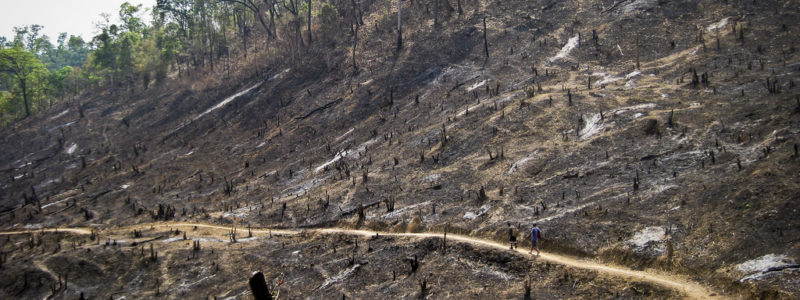Around the world, many of our greatest forests are quickly disappearing. In Brazil, increases in agricultural demand caused the loss of nearly 27,700 square kilometers of forest in 2004 alone. While there are many reasons for forest loss, slash and burn agriculture is definitely one of them.
Slash and Burn Agriculture is a practice of clearing land for farming by rapidly cutting down and burning trees or forests. Farmers practicing this will often cut down a plot of trees, burn the recently slashed area, and once the land is clear they move to a new plot and begin the process again. This causes a very fast destruction of the natural environment, a rapid loss of soil fertility in the affected plots, and significant deforestation (the rapid clearing of a wooded or forest area) in the area.
Why is it a problem? While slash and burn clearing is often the most convenient way to clear a forest, it is far from the healthiest. The practice of Slash and Burn Agriculture is a major contributor to the agriculture industry producing 24% of Greenhouse Gas Emissions internationally.
However, there are some solutions to the problems that slash and burn agriculture causes. Some of these are the following:
- Inga Alley Cropping is a tactic of replanting a sturdy, nitrogen-fixing plant in deforested areas to revive the soil and provide a new generation of trees.
- Soil Relocation is also a unique solution to reviving these areas and bringing nutrients back to damaged land by relocating it from more fertile areas.
If you found this blog post interesting, you may want to check out this Global Giving wildlife conservation fund, or a project to help the previously mentioned Inga Alley Cropping internationally, via the INGA Foundation. Both are great ways to help recover from the damages done by slash and burn clearing, and great projects to help the greater environment!

